For this Liverpool FC season review, we journey back to the summer of 1977. The monarch has sat on the throne for 25 years, and Liverpool is festooned in Union Jack bunting and happily celebrates the milestone. This is Merseyside before Thatcher, when it’s people regarded themselves as both Scouse and English.
Roads have been closed to allow parties to take place in the streets, and life feels good. For supporters of the Reds, there’s another reason to celebrate, their team are Kings of Europe. Life feels glorious.
From the moment Bill Shankly stepped foot on Anfield soil, he had dreamed of turning the club into a ‘Bastion of invincibility’ with European conquest high on his agenda. He’d go agonisingly close in 1965, before some dubious refereeing in Italy denied his Reds side a place in the final.
He would eventually win the UEFA Cup in 1973, and in doing so he had cemented Liverpool’s love affair with European football. He would surely have looked on with immense pride as his protege, Paisley, delivered the continents top prize in 1977, beating Borussia Mönchengladbach 3-1 in Rome. Bob had fulfilled his mentors promise and the Reds were Kings of Europe.
As a beaming Emlyn Hughes greeted the press with a smile as bright as the Cup he was holding, he was asked “how do you top that?”
“Win it again,” came his emphatic reply. The gauntlet had been thrown down to the rest of Europe and his teammates. Liverpool would not be surrendering their crown easily.
However, if they were to retain the cup, they would have to do it without their talismanic striker, Kevin Keegan. ‘King Kev’ had left for Hamburg in July. In doing so, he broke many a young Red’s heart, including my own.
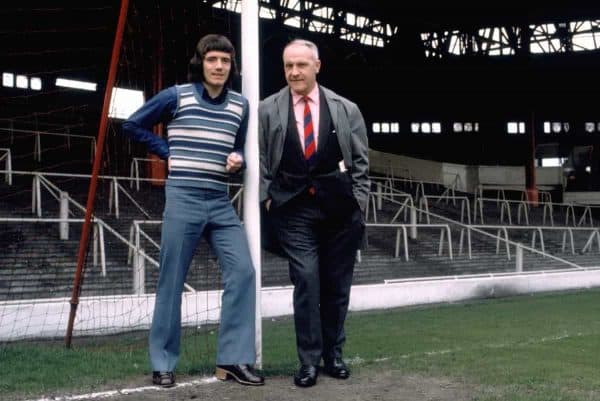
Paisley, though, was a master in the transfer market. He had a keen eye for what he believed was the archetypal Liverpool player, and throughout his nine-year reign he would replace one seemingly indispensable star after the other. This was one of his many talents, and it ensured almost total domination of English and European football throughout his tenure.
A new King, Kenny
In the summer of 1977, Bob would head to Glasgow Celtic and return to Anfield with one Kenny Dalglish. I need not tell you how significant that signing was. With the benefit of hindsight, we all know it was inspired and possibly the greatest in the club’s history.
However, as a measure of Paisley’s true genius at talent spotting, Bob knew how important it was back then, when some of us thought Keegan was irreplaceable. He reportedly instructed club officials to make a hasty exit before the Glasgow club changed their minds after he had secured the signing of Dalglish for £440,000, a fee he described as “robbery with menace.”
Kenny would make his debut in Charity Shield, a 0-0 draw with Manchester United. Despite him not scoring, supporters would see enough in that game to recognise that Liverpool had signed another star though.
The season got underway amidst turbulent times. The far-right National Front had attempted a number of marches across the country, only to be met with fierce counter-demonstrations in London and Birmingham. In sport, cricketer Geoffrey Boycott hit his 100th century and Ron Greenwood became the England manager. Meanwhile, Liverpool Football Club marched on.
The Reds eased through their first 12 games of the season, winning eight, drawing three and losing only one. That was a stinging 2-0 defeat to Man United at Old Trafford. It was a result that left Liverpool fourth in the table, a single point behind the then leaders, Manchester City.
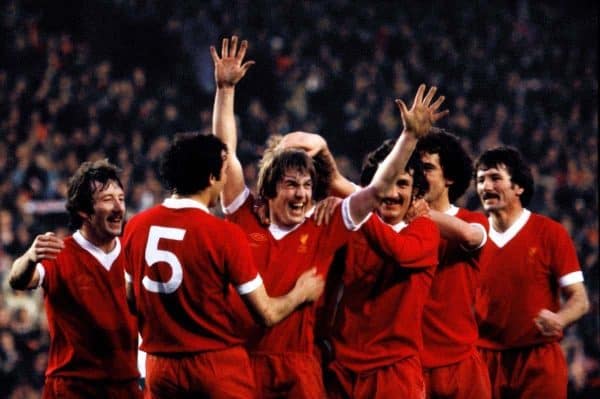
October brought a return of the European Cup to Anfield, and the reigning champions would kick off their defence against Dynamo Dresden. The game got underway at 7.30pm, under the floodlights, and with just under 40,000 inside the stadium, Liverpool proceeded to wipe the floor with the German side.
In the 14th minute it was a young centre back, Alan Hansen, who opened the scoring with a header from a John Toshack corner. It was his first goal for the club, and he would later admit that he had intended to put it to the keeper’s right, but it had gone the opposite direction. It didn’t matter, he had scored and the Reds were off and running.
Hansen, who had signed from Partick Thistle the season before, would go on to win eight league titles, two FA Cups, three League Cups and three European Cups for the Reds. However, in a glittering career that spanned fourteen years and 620 games, he scored just eight goals. He sometimes joked that he would get a nosebleed if he crossed the halfway line. Hansen, or ‘Jockey’ as he was nicknamed, was a supreme defender – arguably one of the best the club has ever seen – and though he didn’t score too many, he certainly kept a lot out.
Liverpool won the game 5-1, thanks to a brace from Jimmy Case, a Phil Neal penalty and Ray Kennedy hit the fifth. The final would be contested at Wembley in 1978, and the Reds had taken their first decisive step towards the capital.
Writing in the Daily Mirror, Frank McGhee described Liverpool as ‘powerful and wonderful.’ He singled out John Toshack in particular, who he said had destroyed the concentration of the Dresden defenders.
Paisley took a lot of praise also, for his ‘master-stroke of planning.’ Knowing that the East German champions would try to stifle the Reds attack with a tight marking game, Paisley had thrown Toshack, who was a giant of a player, into the mix. The Welshman would be playing his first game since March 76, but his contribution was pivotal, in unsettling the Dresden backline and creating the space for others to run amok.
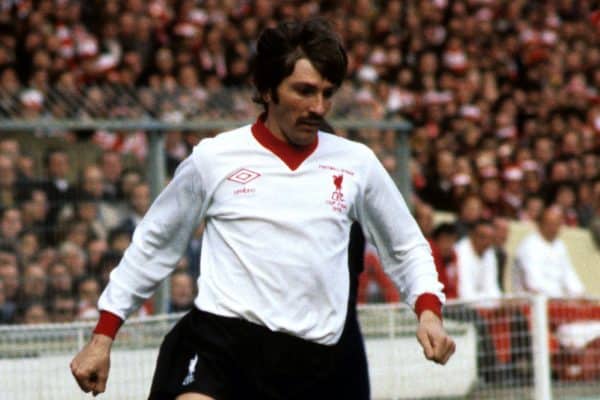
The second leg, however, was far from comfortable. Liverpool lost the game 2-1, with Steve Heighway grabbing one for the Reds in the second half, after they had fallen two behind to a goal either side of half time. Dresden, with home advantage and playing in front of a fiercely partisan crowd, put the men from Anfield under enormous pressure.
Michael Charters, writing in the Liverpool Echo, described how he had never seen the Reds under so much intense bombardment, saying that not since the UEFA Cup final in 1973, had they had such a hammering. He singled out Ray Clemence, whose saves prevented the East Germans from completing a historic comeback.
The tie finished 6-3 on aggregate. It may look comfortable on paper, but it had been far from it.
Sandwiched in the middle of the two legs, were three games against Everton and Manchester City. Liverpool’s league form was beginning to unravel. They played out a dull goalless derby stalemate, in which both sets of defenders had the upper hand. Then came a tough visit to early pace-setters, Manchester City.
Mick Channon, Brian Kidd and Joe Royle hit City’s three goals and David Fairclough registered a solitary consolation for the Reds on a miserable day. Liverpool were now in second place, but the cracks were starting to show.
At the halfway stage of the season, after a Boxing day draw away to Brian Clough’s Nottingham Forest, the Reds had slumped to fourth in the table. They had won 10, drawn six and lost five of their opening 21 games. Forest were now top of the table and that’s were they’d be at the end of the season. Liverpool would have to be content with a runner up spot.
European Royalty
However, in December – just as it was at the end of the season – Europe would prove to be Liverpool’s salvation.
After beating Dresden in November, they would have to wait until March to contest the Quarter Final stage. Before that, the Reds would face Kevin Keegan’s SV Hamburg in the European Super Cup Final in December.
The two-legged contest would prove to be a nightmare return to Anfield for Keegan. The German side gave a creditable performance in the first leg, in front of a home crowd of just 16,000. They had even taken the lead, only for David Fairclough to grab an equaliser. Still, the UEFA Cup winners had held the champions of Europe – not for long.
The second leg saw Keegan’s side humiliated at Anfield. The Reds trounced them 6-0. The Daily Mirror describes their performance as ’emphatic – almost arrogant.’ Who could argue with that? The Reds roared into Hamburg, and with the Kop at its majestic best they tore the German side to shreds.
Terry McDermott, in particular, put in a stellar performance, smashing three goals which included two scored in the space of a minute, in a devastating blitz that saw Liverpool go 4-0 up in the 56th minute. The icing was applied to the Reds sumptuous cake with another mesmerising brace in the 86th and 88th minutes. Fairclough and Dalglish adding the gloss to an already gleaming performance.

Keegan hadn’t known what hit him, and Liverpool had added another piece of silverware to the cabinet.
For McDermott, this had been a watershed moment in his Liverpool career. After spending much of his time out wide, he had been moved into a more central role, due to injuries elsewhere. It would be a position he would master for the rest of his Reds career, allowing him to launch raid after raid from the middle of the park and score 81 times for the Reds.
Despite their struggles on the league front, Liverpool were marching on in both Europe and the League Cup. They went out of the FA Cup in the third round, though, after a 4-2 defeat to Chelsea, but by February they had secured their place in the final of the League Cup thanks to victory over Arsenal.
The Reds would once again face Nottingham Forest at Wembley. Before that though, a couple of key moments in Liverpool history would play out. The first came in a home game against Manchester United.
The Scottish Spine
Liverpool won 3-1, but the game was marked by a debut goal for new signing Graeme Souness. The tough Scot had been signed from Middlesborough in January 1978. He would go on to become part of an all-Scottish spine withHansen and Dalglish, and they would conquer all before them.
Bill Shankly once said, “If you’ve got three Scottish players in your side, you’ve got a chance. Any more, and you’ve got a problem.” Kenny Dalglish later quipped, “I used to look around the dressing room at Jockey and Souness and think, ‘we’re the master race’. Then in walked Steve Nicol.”
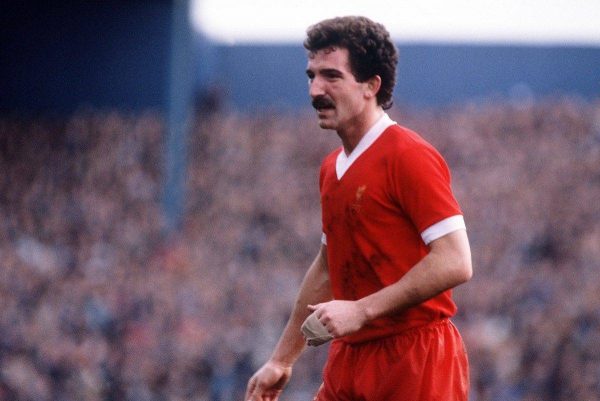
In the game against United, in February, Souness would stamp his mark on Liverpool’s midfield and grab his debut goal. He would have a far bigger contribution to make this season, but scoring against United in front of almost 50,000 people isn’t a bad start.
The second significant moment came when Liverpool travelled to Lisbon in the Quarter Final of the European Cup. The game took place on the 1st March, and the Reds were given the sternest of tests by the Portuguese Champions. The weather was awful and rain pelted the pitch, creating conditions more reminiscent of English football than a tie on the continent.
It may have been a game played in the iconic Stadium of Light, but the pitch was a mud bath and the Reds had to summon all their reserves of character and resilience to get through the game. At one point the weather was so bad, it looked like the game would be abandoned.
Benfica took the lead in the 13th minute and for a moment doubt flickered for the European Champions. Was the Quarter Final a step too far, could they really go on and be the first English club to successfully defend their crown?
The answer came in the form of Jimmy Case and Emlyn Hughes. In the 37th minute, Liverpool won a free-kick outside the Benfica penalty area. With the rain beating down and the Scouser facing a river of mud and defensive wall in front of him, he shaped up to test the keeper.
He put the ball through the wall and it flew straight into the net. The Reds were level. In the second half they battled away and in what the Liverpool Echo called a performance of remarkable character. Hughes grabbed Liverpool’s second decisive goal in the 72nd minute and, with that he gave everyone associated with the club the belief that they could go all the way.
The second leg saw Liverpool coast to a 4-1 win. The goals came courtesy of Ian Callaghan, Dalglish, McDermott and Phil Neal. Only Borussia Monchengladbach stood in the way of another European Cup Final in successive seasons.
Before that though, the Reds would face Nottingham Forest in the League Cup Final. Eventual league champions, Forest, were emerging as serious rivals for Liverpool. Brian Clough had fashioned a tough side and they would give Liverpool a stern test at Wembley on the 18th March 1978.
The omens looked good for Liverpool, as Clough had been unable to field his first choice Keeper, Peter Shilton, who was cup-tied. Instead he opted for 18-year-old Chris Woods. The Reds couldn’t find a way through though, despite a McDermott goal being ruled out for handball. The ball seemed to hist his shoulder, but the referee wasn’t having it, and the tie was eventually taken to a replay at Old Trafford four days later.
Paisley’s men lost 1-0 thanks to a John Robertson penalty in the 53rd minute. Liverpool players raged as the foul that led to the spot-kick appeared to be outside the box, and Tommy Smith was particularly cutting about the referee at full time, declaring that he should be shot for his error.
There was even more controversy in the tie, when Callaghan received his first and only booking in a career that spanned 18 years and 857 appearances. Even Forest defender, and Scouser, Peter Withe seemed to plead with the referee not to give the booking. It was a miserable day in the capital for the men in red, but they would experience entirely the opposite emotions in the same place, less than a month later.
Wembley For No.2
Liverpool would return to Wembley for another European Cup Final on the 10th May 1978. They had got there thanks to the away goal rule, in a two-legged semi-final against Borussia Monchengladbach. Having lost the first leg 2-1, the Reds won the home match 3-0. Their opponents would be Belgian Champions, Club Brugge.
As games go, it was far from being a classic. However, with the stadium packed to the rafters with 92,5000 in attendance and Liverpool supporters vastly outnumbering their opponents, the game erupted into life in the 65th minute.
Brugge had come to stifle Liverpool and had shown very little ambition throughout the game. The Reds had looked frustrated at times, but the red throng in the stands, a sea of colour and waves of noise had never given up.
The ball fell to Souness, who played a delightful ball to Dalglish. With the goalie rushing out and committing himself early, Kenny dinked the ball over him.
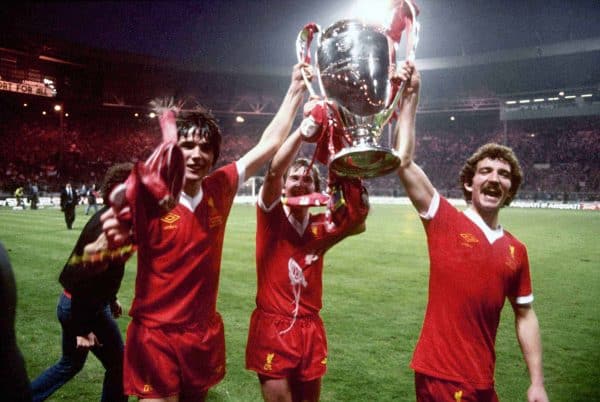
The Scotsman didn’t even wait to see if it had hit the net, knowing his strike had been perfect, he immediately rushed off towards the jubilant Liverpool supporters behind the goal.
He may have given his manager palpitations as he vaulted the advertising boards, but nobody among those delirious fans will ever forget what would become his trademark goal celebration. Arms outstretched and a grin as wide as the Mersey, Kenny had become a King.
Liverpool saw out the game, and Emlyn Hughes would lift his second European Cup in as many seasons. The Reds were the undisputed masters. And, although they had slipped a notch domestically, nobody could hold a candle to them on the biggest stages.
The homecoming was epic, with reports putting the numbers in excess of 500,000. This was a season of such significance. Paisley had built another all-conquering team with a spine as rock-solid as any, he had cemented his place in football history – becoming the first Englishman to retain Europe’s biggest prize. And, he had replaced one club legend with another, ensuring Liverpool’s domination of English and continental football continued without pausing for breath.
Players like Hansen, Souness and Dalglish were formidable and are rightly praised for lighting up Liverpool in the 70s and 80s. However, let us never forget that the man who found them, put them together and provided them with the stage to weave their magic, was Bob Paisley. The man Roy Evans called a ‘humble genius,’ and who an emerging rival – Brian Clough – called the ‘Frank Sinatra of football.’
Liverpool FC, 1977-78
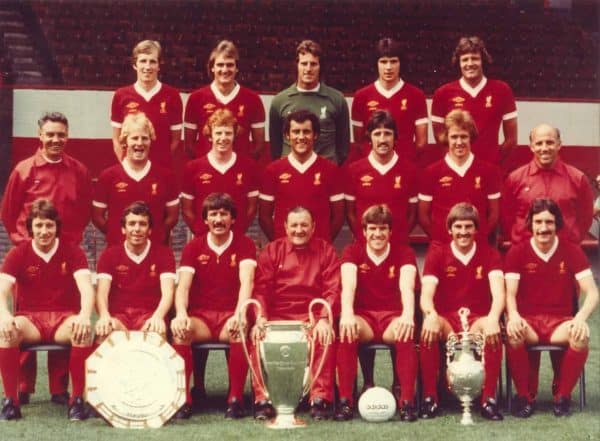
Manager: Bob Paisley
Captain: Emlyn Hughes
Top Scorer: Kenny Dalglish (31 all comps)
Most Appearances: Kenny Dalglish, Phil Neal (62 all comps)
League Position: 2nd (57 points)
FA Cup: Third Round
League Cup: Runners-Up
European Cup: Winners
Total games: 62
Games won: 35
Games drawn: 14
Games lost: 13
Clean sheets – league: 23
Clean sheets – overall: 32
Total goals: 104
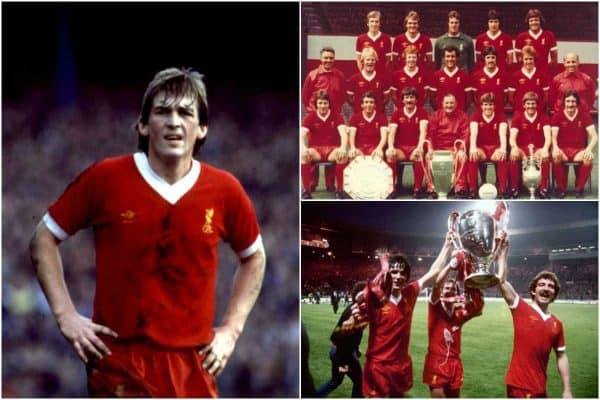

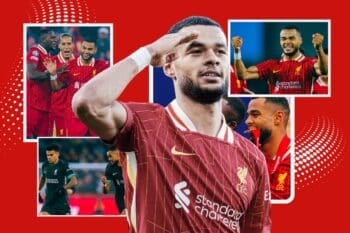
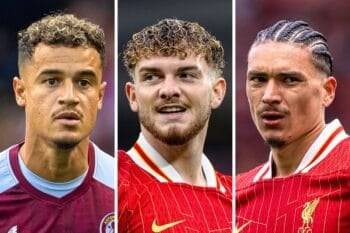
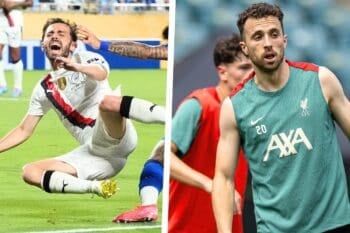
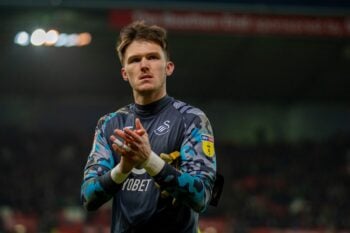
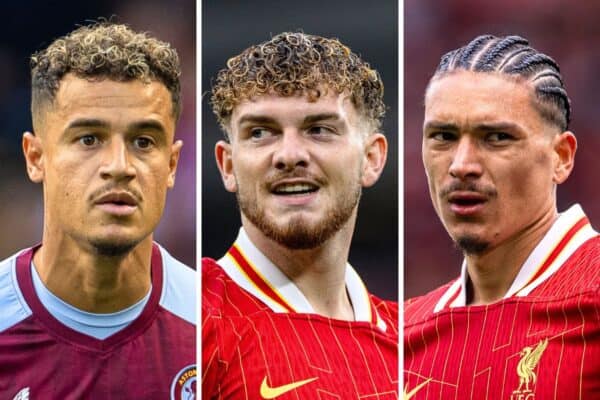
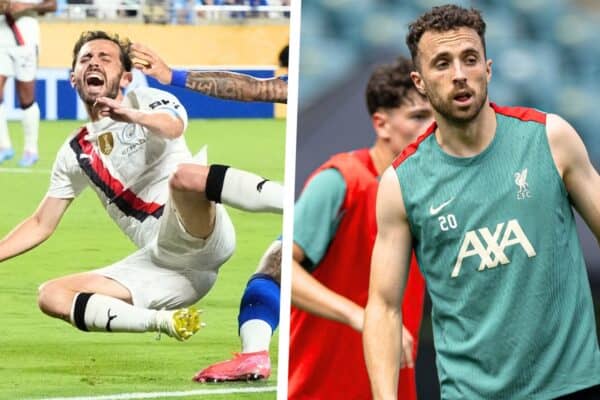
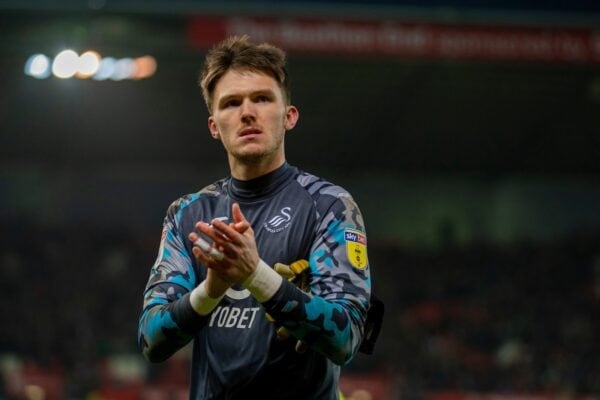

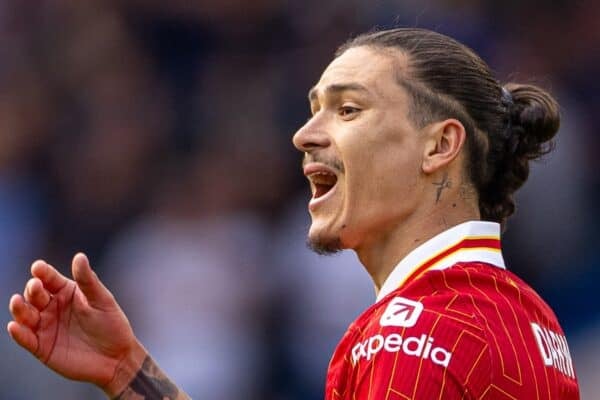
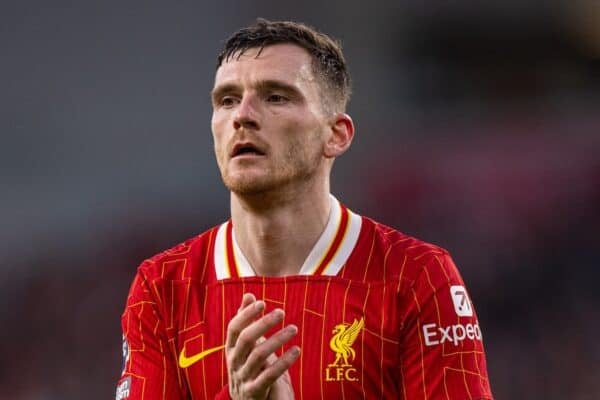
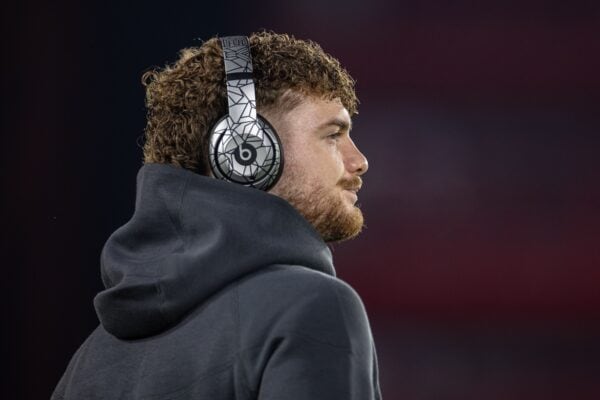
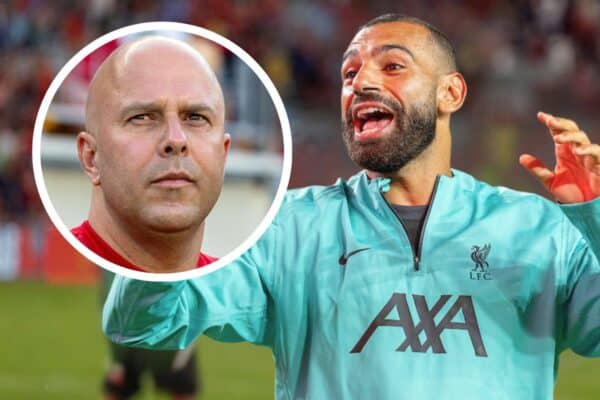


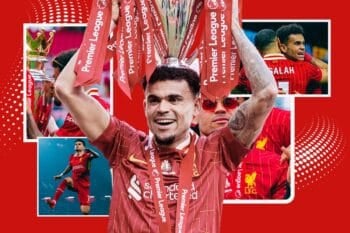
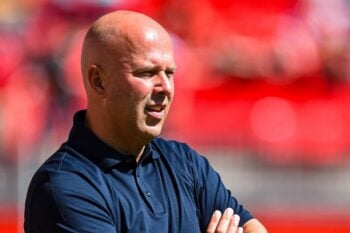
Fan Comments